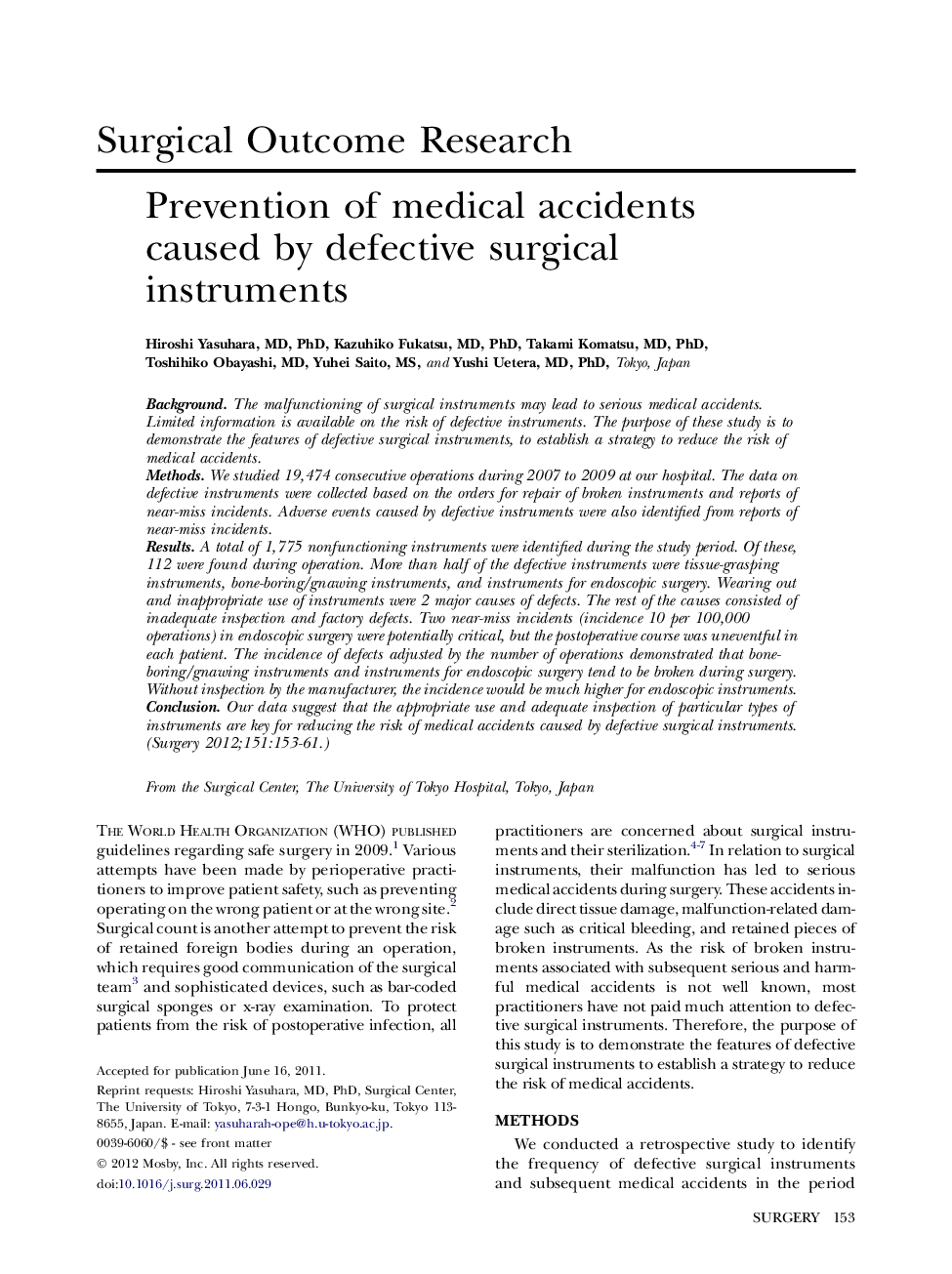| Article ID | Journal | Published Year | Pages | File Type |
|---|---|---|---|---|
| 4308196 | Surgery | 2012 | 9 Pages |
BackgroundThe malfunctioning of surgical instruments may lead to serious medical accidents. Limited information is available on the risk of defective instruments. The purpose of these study is to demonstrate the features of defective surgical instruments, to establish a strategy to reduce the risk of medical accidents.MethodsWe studied 19,474 consecutive operations during 2007 to 2009 at our hospital. The data on defective instruments were collected based on the orders for repair of broken instruments and reports of near-miss incidents. Adverse events caused by defective instruments were also identified from reports of near-miss incidents.ResultsA total of 1,775 nonfunctioning instruments were identified during the study period. Of these, 112 were found during operation. More than half of the defective instruments were tissue-grasping instruments, bone-boring/gnawing instruments, and instruments for endoscopic surgery. Wearing out and inappropriate use of instruments were 2 major causes of defects. The rest of the causes consisted of inadequate inspection and factory defects. Two near-miss incidents (incidence 10 per 100,000 operations) in endoscopic surgery were potentially critical, but the postoperative course was uneventful in each patient. The incidence of defects adjusted by the number of operations demonstrated that bone-boring/gnawing instruments and instruments for endoscopic surgery tend to be broken during surgery. Without inspection by the manufacturer, the incidence would be much higher for endoscopic instruments.ConclusionOur data suggest that the appropriate use and adequate inspection of particular types of instruments are key for reducing the risk of medical accidents caused by defective surgical instruments.
